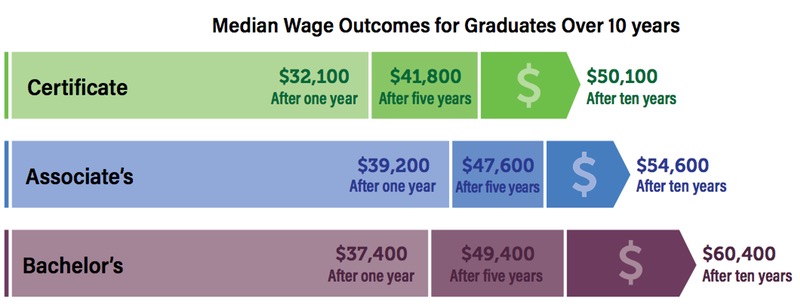Late last month, the fine folks at the Colorado Department of Higher Education (CDHE) released its inaugural higher education ‘Return On Investment’ report… Colorado Rises: Maximizing Value for Students and Our State… at an event at the State Capitol with Governor Jared Polis. You can read the 29-page report here.
I don’t necessarily want to put any particular spin on the report…
But I can’t help it… considering that the report was written by the same Department that gets funded by the Legislators for whom the report was created. Hard to say who was smoking what: CDHE or the General Assembly?
The report begins with this sunny and hopeful message:
In every corner of our state, we find hardworking Coloradans making a better life for themselves and their families. For many, that path to prosperity means earning a postsecondary certificate or degree — and for good reason. Those who continue their education beyond high school earn more money, feel healthier and engage more deeply with their communities…
Speaking at the State Capitol event, Governor Polis kept things optimistic. “We know going to college or technical school is a weighty decision for students and families. The robust data shows that it’s worth it!”
According to numerous press releases about the event, the governor actually used an exclamation point in the phrase, “it’s worth it!”. Which was probably a smart thing to do, if you’re trying to drum up some excitement about “robust data.” Except that the 29-page report didn’t provide us with “robust data.” Yes, it included photos of smiling college students, and lots of colorful charts and graphs. Even some footnotes, and an appendix.

But “robust data”? Nope, not really.
Last year, the General Assembly was getting concerned about the high cost of higher education — which was getting higher and higher by the day. (The cost, I mean. Not the education.) So they passed a new law, HB 18-1226, demanding that CDHE publish an annual ‘Return On Investment’ report. This was rather confusing to the fine folks at CDHE, because they weren’t accustomed to anyone — especially politicians — questioning the value of higher education.
So this 2019 report — Colorado Rises: Maximizing Value for Students and Our State — was their first attempt at justifying their own existence, and obviously CDHE didn’t understand exactly what ‘ROI’ means.
I get it; they’re educators, not financial analysts. The General Assembly was probably expecting too much.
We did get a few interesting numbers to ponder, however. For example, this chart:

If all we had was this chart to inform us, we might be fooled into thinking that there’s an economic benefit to attending college for four years, spending $120,000, and earning a Bachelor’s degree. But for “ROI” to be meaningful, you would need to compare the above wages to the wages you can earn without going to college.
CDHE, like, totally forgot to provide that comparison.
I see where the average wage for a person working in Colorado’s marijuana industry is $45,000, according to ZipRecruiter.com. As far as I know, the only experience you need to work in a marijuana dispensary, you can get in the parking lot of your high school.
If you read the 29-page Maximizing Value for Students and Our State, you will not find a single reference to the marijuana industry… but if anything deserves an exclamation point in Colorado, it would certainly be this budding economic sector. (Excuse the pun.) The cannabis industry now employs over 41,000 people and has generated more than $6.5 billion in sales over the last five years, with April and May of this year the highest-grossing months since legalization.
25% of people who traveled to Colorado, between 2013 and 2018, listed legal marijuana as a reason.

One thing about Colorado universities… that’s gotten higher: Tuition, fees, and housing.
Twenty years ago (1998) the University of Colorado, Boulder was charging $2,969 for tuition — no matter if you were ‘in-state’ or ‘out-of-state.’ Last year, the cost for in-state undergraduates was about $12,532 for tuition and fees. Out-of-state students paid $37,286. That’s just the tuition and fees part. Pile your other living expenses on top, and an in-state student can expect to spend about $30,200. Per year.
An out-of-state student will fork out about $54,000. Per year.
And some people say marijuana is expensive.
Parents and students, think it over carefully. Don’t believe everything you hear from Governor Polis, or from the Colorado Department of Higher Education. It’s very likely the ROI from learning how to roll a joint is a lot higher — and I do mean higher — than an expensive Bachelor’s degree in, say, Outdoor Education (starting salary, $25,000) or Photography & Film (starting salary, $23,000) or Slavic Languages (starting salary $16,000).
We might assume — as CDHE does — that a young person with a Bachelor’s degree in Slavic Languages will “engage more deeply with their community” than a Budtender working at the local dispensary. But I would argue (without any robust data to support my argument) that the Budtender will engage more highly with their community.
